We may not have the course you’re looking for. If you enquire or give us a call on + 1-866 272 8822 and speak to our training experts, we may still be able to help with your training requirements.
Training Outcomes Within Your Budget!
We ensure quality, budget-alignment, and timely delivery by our expert instructors.

Learn How to Make Create a Chart in Excel with our comprehensive blog. This blog will equip you with the skills to transform raw data into compelling, insightful charts. Whether you’re a novice or a seasoned pro, you’ll learn to navigate Excel’s features and bring your information to life. Let’s dive in and chart a course to data mastery!
Table of Contents
1) What is a Chart in Excel?
2) Types of Charts in Excel
3) How to make create a Chart in Excel?
4) Steps to Create Charts in Excel
5) How to change Charts type in Excel?
6) Conclusion
What is a Chart in Excel?
A Chart is a graphical representation used to share or represent information in the form of a graph, table, or diagram.
The purpose of using Charts in Excel is to simplify the data. The Charts help convert the numerical data into visual graphics aiding users to comprehend the information.

How to make a Chart in Excel?
Creating Charts in Excel is simple to learn. It is helpful to organise data for a better understanding and presentation. Irrespective of the Excel versions you are working on, you will find the charts option in all of them.
Following is the data we will use in our example to create charts in Excel. This data represents the census report of four wild animals in India for the years mentioned in the table. So let us try to get this information created in the form of charts in Excel.
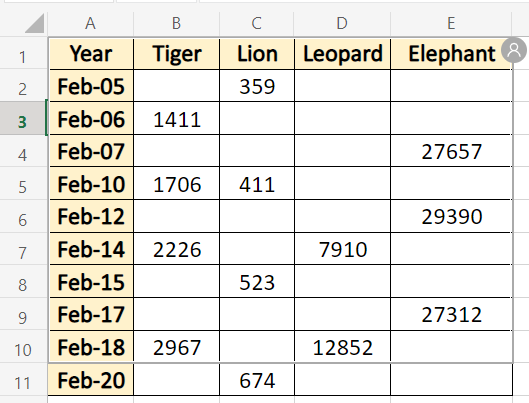
We have used two examples to show you How to Make a Chart in Excel. The examples use two different versions of Excel. One shows you how to Create a Chart in a 2D version and another in 3D.
Become a professional Microsoft Excel Expert with Microsoft Excel VBA and Macro Training - Join now!
Steps to Create a Charts in Excel
Below are the key steps to Create a Chart in Excel:
Example 1: Line Chart
To create a line chart, select the data from A1 to E11 and click on the Insert tab from the Ribbon.
Once you click on the chart option, you will find multiple Charts to choose from on the screen.
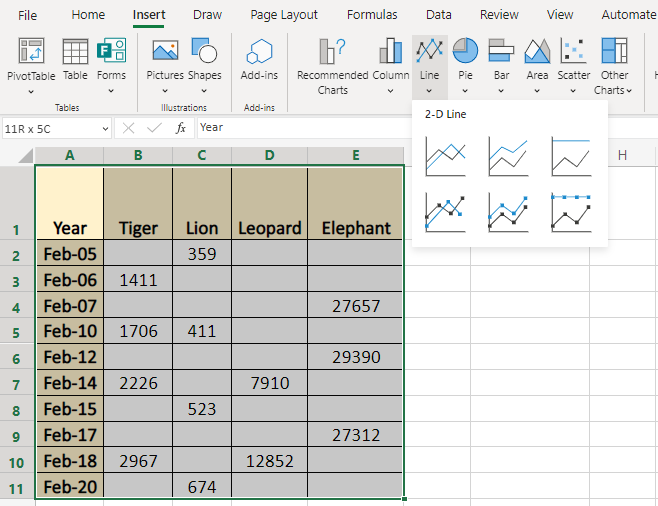
Example 2: 2-D Chart
This example shows how to create a 2-D column Chart in Excel for the data provided.
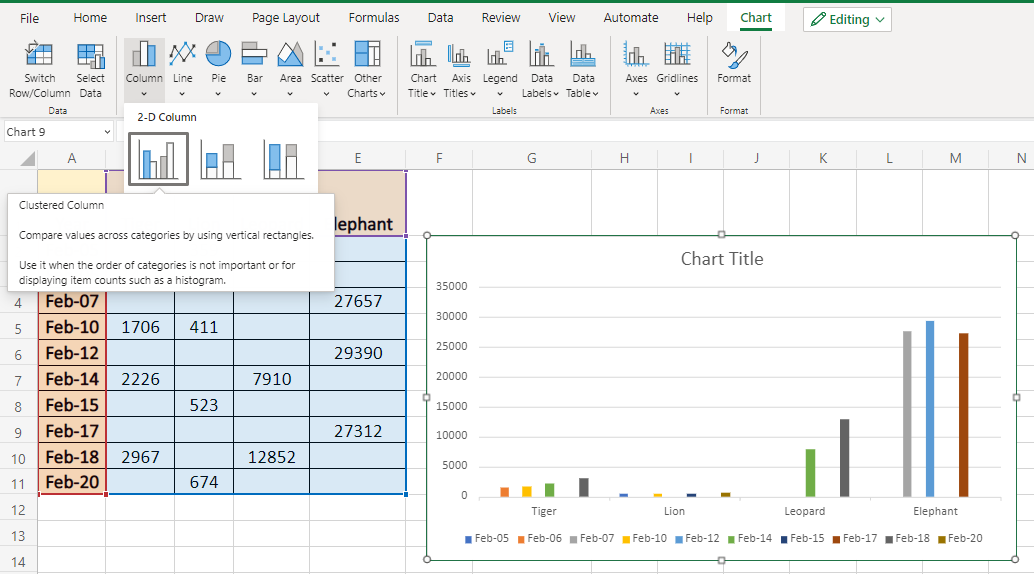
To insert the data labels, you can click from the options available in the dropdown, as visible in the image below.
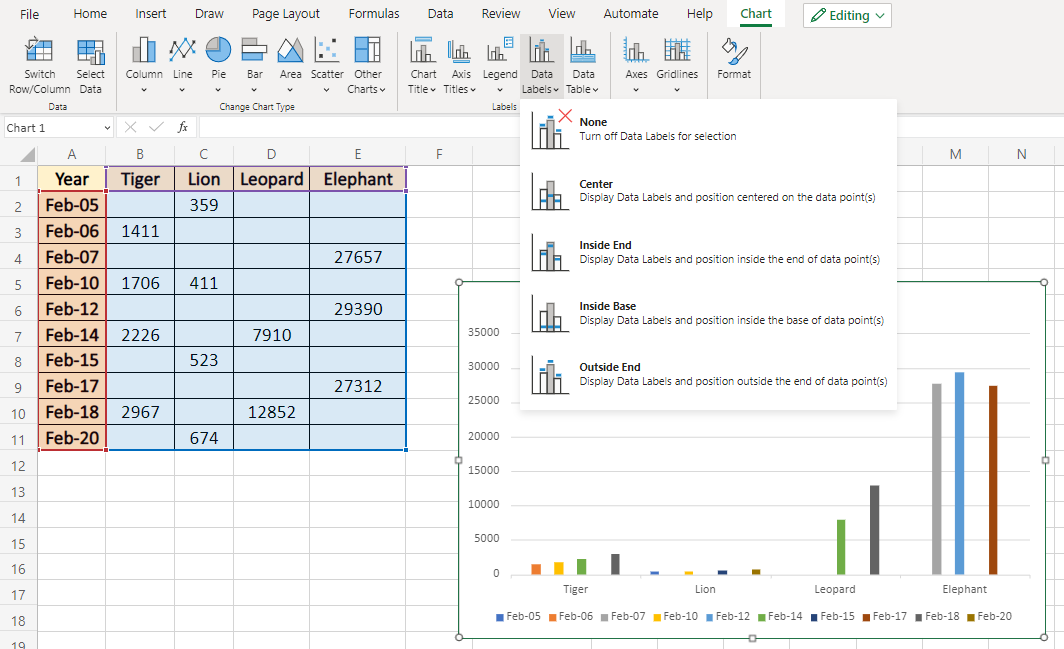
You can use the Outside End option, as shown above, to display the data labels in your chart. The result will be as shown in the below image.
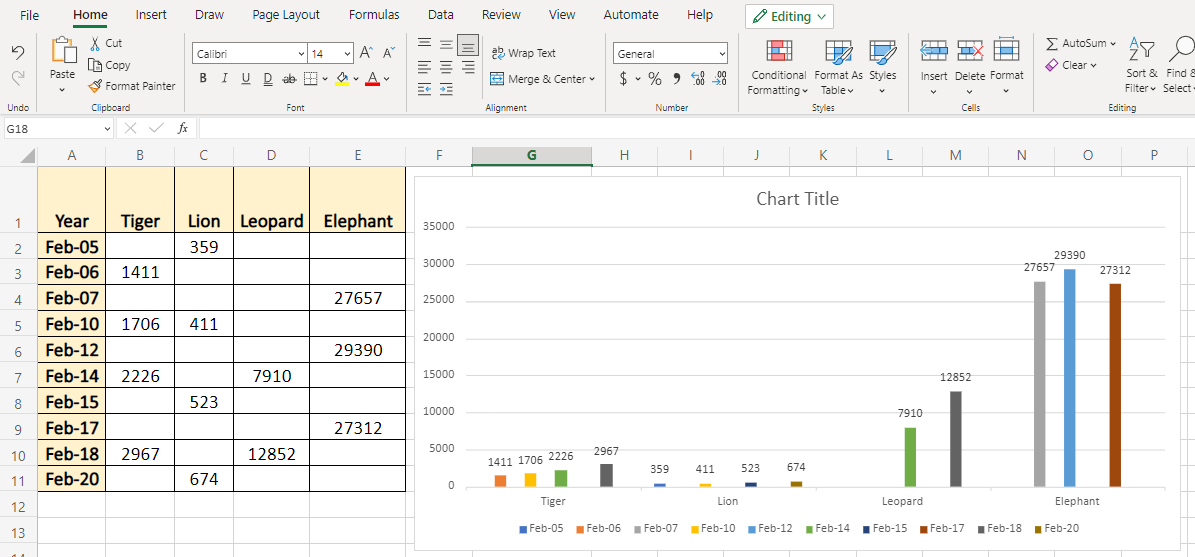
Example 3: 3-D Chart
Now let us look at our second example of creating a 3-D Chart in Excel.
As we can see, the ribbon displayed in the image below has different visuals and arrangement patterns to sort out the features of the Charts.

You can move through the different options provided in the Excel Charts type to see the preview of how your chart would look before clicking the OK option.
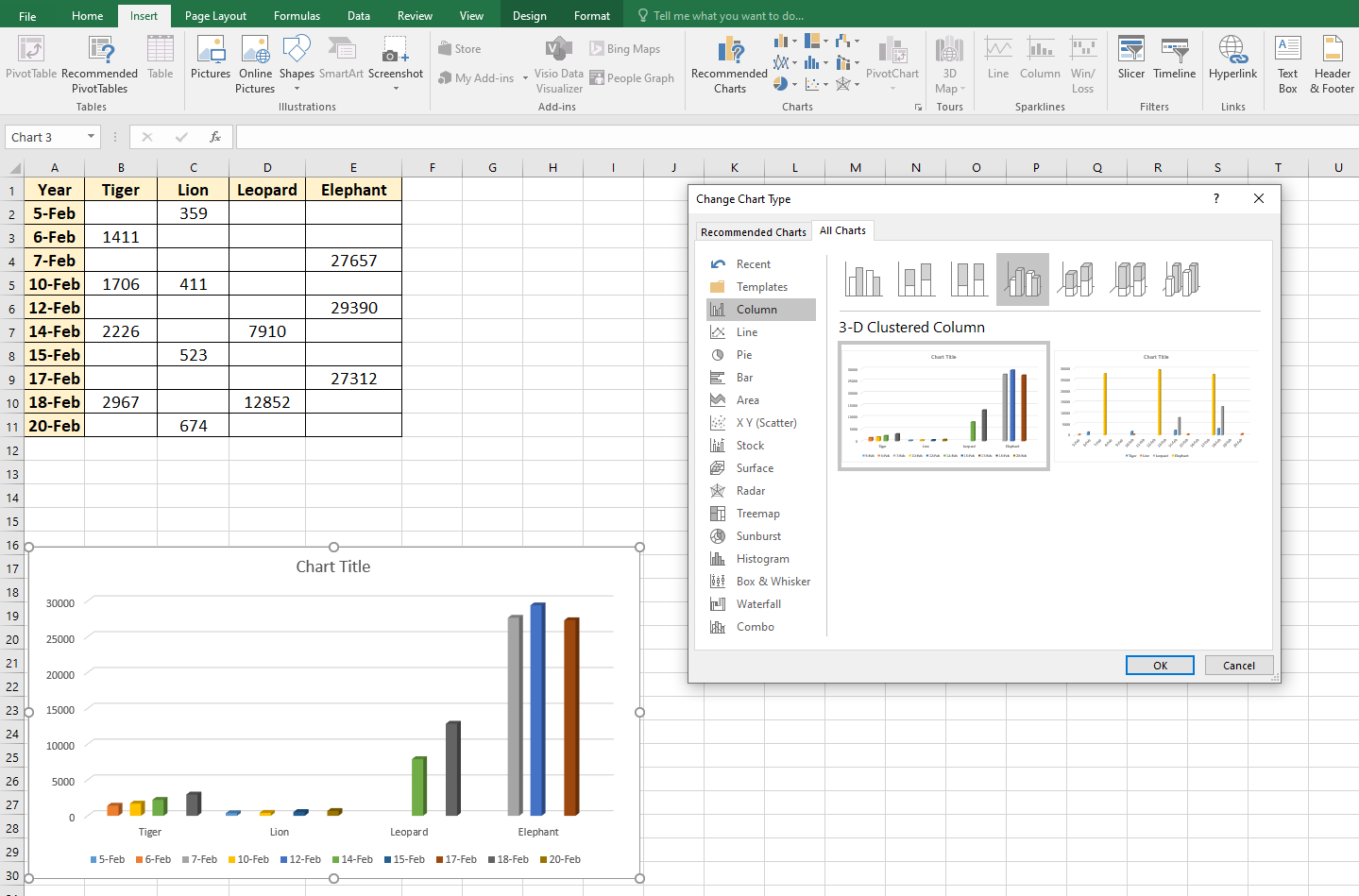
As seen in the example below, you can click on the design options available from the Design title to select a suitable design.
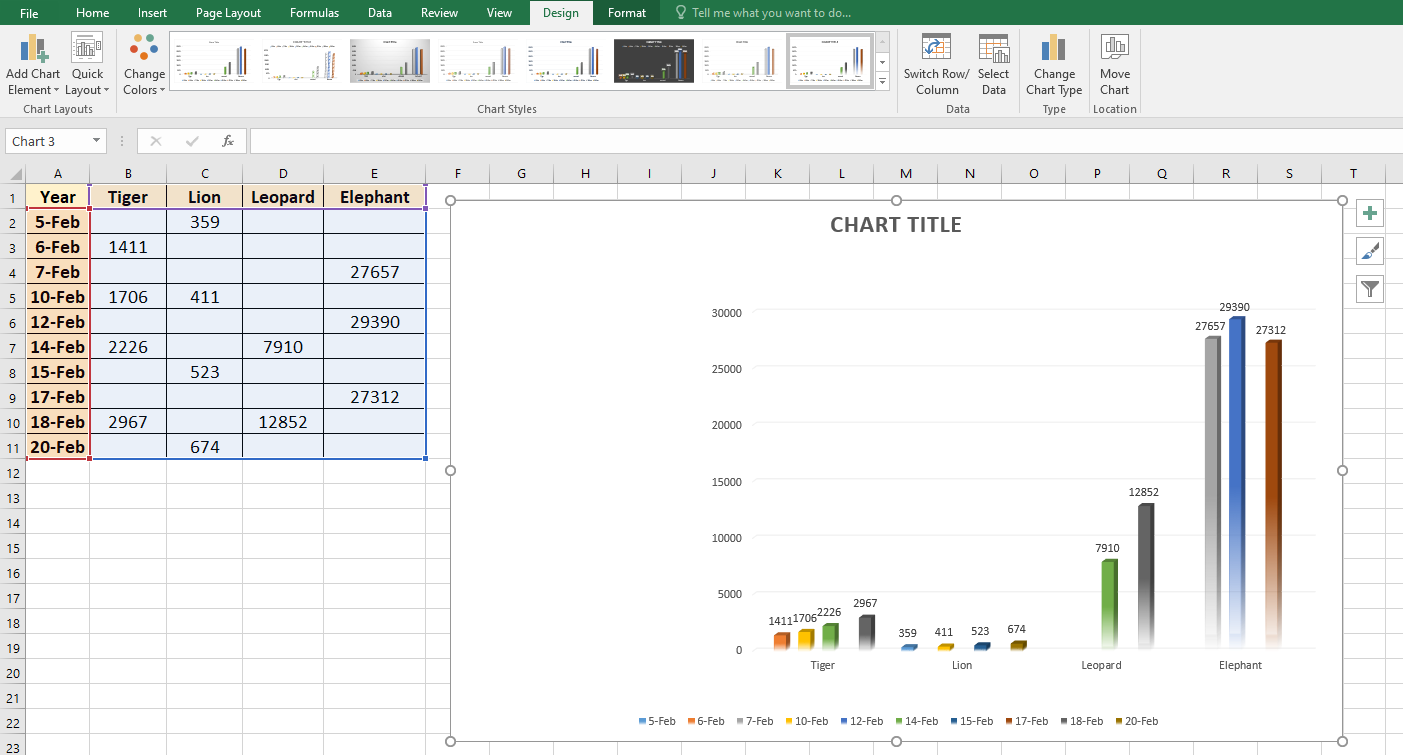
You can use multiple other options to format the data series created in the chart, as seen in the image, to make it look more attractive and visually appealing.
Make sure you give a meaningful name in the Chart Title which suits your data.
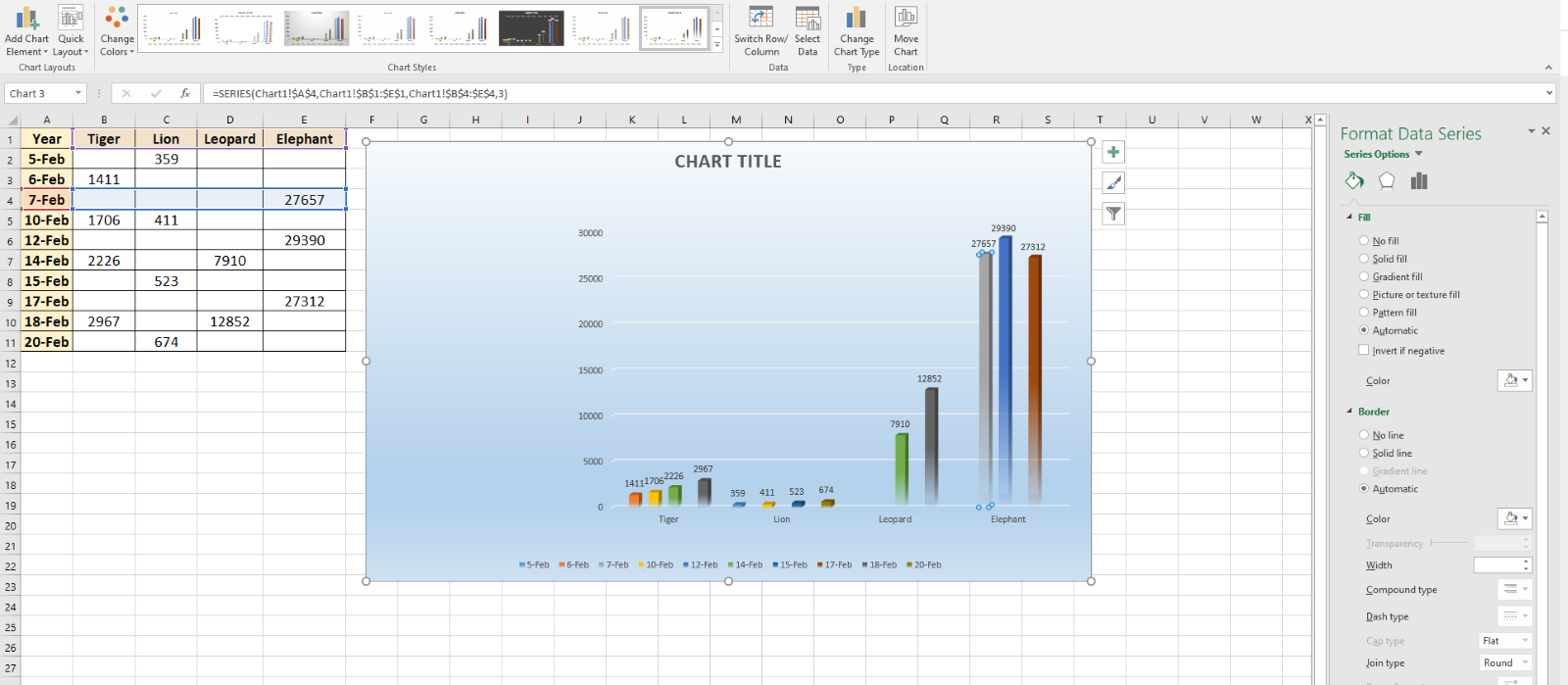
The Quick Analysis toolbar can also make quick changes in Charts, colours, icons, data bars and more. You can switch between the tabs (Formatting, Charts, Totals, Tables, and Sparklines) of the Quick Analysis toolbar to make the necessary changes and updates in the Excel Chart.
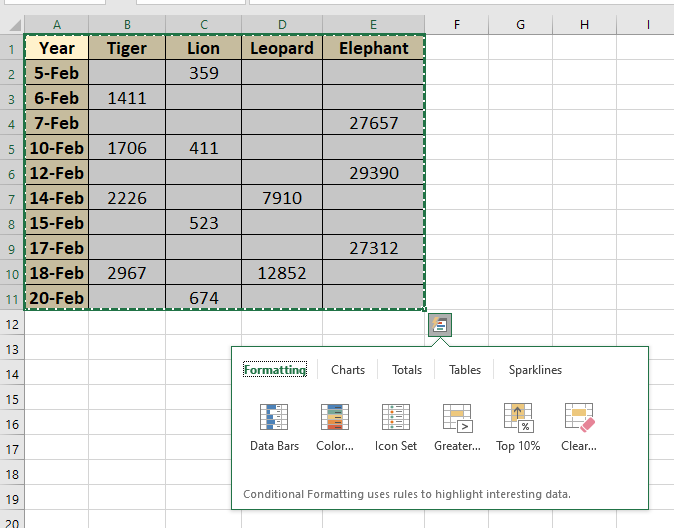
How to change Charts type in Excel?
Excel gives the possibility of altering Charts if you want to change from one chart to another at any point of time. The steps to doing this are discussed below:
1) Select the chart which is created already in the previous instance.
2) Click on the Change Chart Type under Chart Design tab.

3) The Change Chart Type window opens. On the window, hover towards the left side of the panel window and click on any chart, which you want to select.
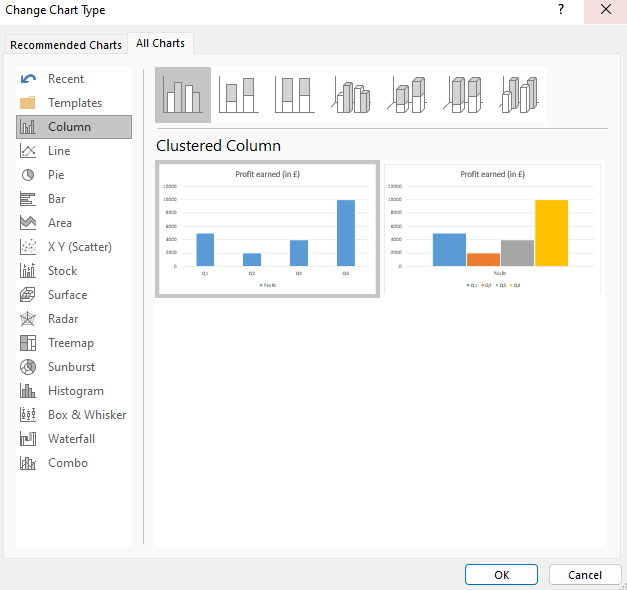
4) Finally, click on OK to make the changes.
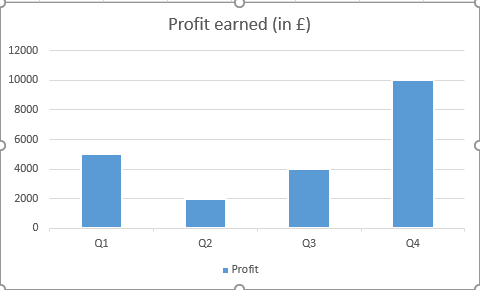
Conclusion
This blog discusses one of the essential functions of Excel – How to make a Chart in Excel, which is not limited (usage-wise) to any specific domain. Creating a chart is a way to present the data in the most user-friendly format to make information visually appealing and attractive. You can follow the examples given above and try experimenting with a few more examples. Hopefully, you will achieve perfection in creating charts in a few hours.
Become an Excel Expert by learning how to create advanced Excel formulas, macros, and much more in our MS Excel training - Sign up for Microsoft Excel Expert. now!
Frequently Asked Questions

When labelling and formatting data points in an Excel chart, it's crucial to ensure clarity and readability. Use descriptive labels to convey information effectively. Opt for a consistent and intuitive formatting style, such as using bold text for titles and axis labels and contrasting colors for data points. Avoid clutter by strategically placing labels and using data point markers sparingly.

Excel offers several accessibility features to ensure Charts are inclusive for all users. These include high contrast mode for improved visibility, keyboard shortcuts for navigation, and screen reader compatibility for users with visual impairments. Additionally, Excel allows alternative text descriptions for Charts, enabling screen readers to convey chart information audibly.

The Knowledge Academy takes global learning to new heights, offering over 30,000 online courses across 490+ locations in 220 countries. This expansive reach ensures accessibility and convenience for learners worldwide.
Alongside our diverse Online Course Catalogue, encompassing 17 major categories, we go the extra mile by providing a plethora of free educational Online Resources like News updates, Blogs, videos, webinars, and interview questions. Tailoring learning experiences further, professionals can maximise value with customisable Course Bundles of TKA.

The Knowledge Academy’s Knowledge Pass, a prepaid voucher, adds another layer of flexibility, allowing course bookings over a 12-month period. Join us on a journey where education knows no bounds.

The Knowledge Academy offers various Microsoft Excel Training & Certification Courses, including Microsoft Excel Masterclass, Business Analytics with Excel and Excel Training with Gantt Charts. These courses cater to different skill levels, providing comprehensive insights into How to Create a Project Plan in Excel.
Our Office Applications blogs cover a range of topics related to Microsoft Excel, offering valuable resources, best practices, and industry insights. Whether you are a beginner or looking to advance your Excel Skills, The Knowledge Academy's diverse courses and informative blogs have you covered.
Upcoming Office Applications Resources Batches & Dates
Date
 Microsoft Excel Course
Microsoft Excel Course
Fri 26th Jul 2024
Fri 20th Sep 2024
Fri 15th Nov 2024
Fri 20th Dec 2024









 Top Rated Course
Top Rated Course


 If you wish to make any changes to your course, please
If you wish to make any changes to your course, please


